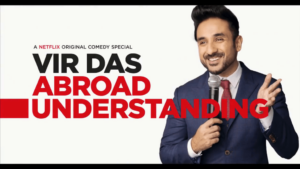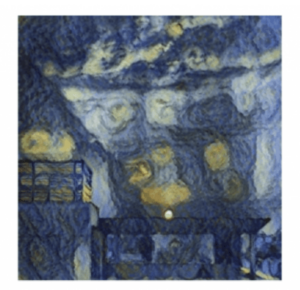[This post is co-authored with Swaraj and SpicyIP intern Sidhi Pramodh Rayudu. Sidhi is a final year B.A. LL.B (Hons) student at Hidayatullah National Law University, Raipur. He is interested in IP law, and commercial and criminal litigation.]

Can Over-The-Top (OTT) Streaming platforms be afforded the same legal protections for broadcasting as conventional mediums? After being answered in the negative by a single judge bench of the Bombay High Court in 2019, this question was once again answered in the negative by the Division Bench of the Bombay High Court. Though the order was passed in Oct 2022, it has only been uploaded on the High Court website in September 2023, almost a year later! In fact, a lot has happened in the music broadcasting scene at this time (for instance ISRA entered into an agreement with the Indian Music Industry, the Bombay High Court passed a landmark order on the rights of the authors of the underlying work). Anyhow, this post aims to delve into this division bench order, explaining why it is legally sound.
Background
Conventional media such as on TV and radio can avail of a statutory licensing scheme under Section 31D of the Copyright Act, under which any ‘broadcasting organization’ desirous of ‘communicating to the public’ any sound recording, may obtain a statutory license to do so, provided they pay the royalty rates to the copyright owners. Wynk, an OTT platform, tried to invoke this provision after a failed negotiation a few years ago, terming the demand of approx 4.5 crore for a 2-year access to Tips song repertoire as excessive. As previously covered on the blog here and here, Justice Kathawala’s comprehensive interim order in 2019 held that OTT platforms are not eligible for the 31D license, with the main reason for this finding being that Section 31D specifically addresses public communication of sound recordings through broadcast, not their commercial rental or sale. J. Kathawala also held that the legislature was well aware of the distinctions between rights associated with commercial rental or sale, and the right to broadcast, therefore the lack of explicit language indicated the lack of legislative intent towards this end.
The Division Bench of the BHC seems to have largely agreed on its order and in some parts gone further than the earlier order.
Division Bench Order
The Division Bench order mostly recounts the arguments advanced by the Parties and the observation made by the Single Judge earlier. While the order has been written in a convoluted manner, for clarity we think that its key takeaways can be divided into two sub-parts- First, on the Legislative Scheme of Statutory Licenses; and Second, on the Public Interest justifications.
Emphasis on Radio and Television Broadcasting u/s S. 31D r/w Rules 29 and 31
The assessment on this point begins with Wynk’s argument that the provision contemplates just the requirement of prior notice and that the medium of broadcast doesn’t matter as once Section 31D stipulates “broadcast” it’s immaterial how this broadcast is achieved. Countering this by reiterating Tips’ argument, the order notes that Section 31D (3) and (4) restrict the ambit of the provision to just radio and television broadcasting. This is further substantiated by harmoniously reading the Section with Rule 29 (1) (which requires royalty to be set before any notice can be sent) Rule 29 (3) and (4) (which prescribes the different requirements under the notices for broadcasting over television or radio) and Rule 31 (which bifurcates between the royalties for broadcast over Television and Radio). Furthermore, the DB agreed that at the time of the 2012 Amendment, internet streaming was still a thing and if provisions of 31D were to be extended thereon, then the Parliament would have done so. Therefore, much like the Single Judge, the Division Bench read the provision literally and held that Section 31D mandates statutory licensing only for radio and television broadcasting.
The DB also clarified that to seek a license under Section 31D, before any notice is issued, the rate of royalty must be determined first.
Public Interest v. Profit Motive
Another, argument put forth by Wynk was that Tips, by not allowing it to stream its repertoire was engaging in “copyright hoarding” and thus, for the sake of public interest, Wynk should be allowed to stream its repertoire under Section 31D. Countering this, Tips argued that if such an interpretation is allowed, then all the streamers will simply rely on a commercial court’s order fixing royalty and will force not only Tips (who has a big repository of songs) but also small artists, to stream their work at a price which may be less than the market rates. Tips further reiterated that Section 31D is an expropriatory provision and thus should be construed narrowly with the least burden on the person affected i.e. Tips. (Section 31D has previously been determined as expropriatory in Music Broadcast Ltd. v. Tips Industries.)
On this point, the Division Bench set the record straight by expressly stating that both Wynk and Tips are “for the profit” entities. The DB observed that Wynk was not engaged in public service but rather its benefits can be accessed only upon the payment of subscription fees. The court thus held that allowing Wynk to obtain a license under Section 31D would be a perversion of statutory intent behind Section 31D.
Determination of Royalties for Broadcast over Streaming, Crisis Averted?
Come to think of it, though the Division Bench didn’t observe anything further on the obligation to determine royalties, looking the procedure under Rule 31(7) one can see that the relevant factors are extremely peculiar to linear broadcasting (like the one done over television or radio) and cannot be applied to compute royalties for non linear transmission like streaming. Some of the factors mandated under Rule 31(7) is the timeslot in which broadcast takes place; class of works that is to be broadcasted; nature of use of work; the terms and conditions included in the Grant of Permission Agreement (GOPA) between Ministry of Information and Broadcasting and the broadcaster for Operating Frequency Modulation (FM) Radio Broadcasting Service. Considering these factors and passing an all binding statutory license under Section 31D may get challenging even for broadcasting the work by a limited number of radio and television broadcasters. So, it’s unclear if the same considerations can apply against the umpteen streaming providers especially considering the nature of streaming in mind wherein the listener is granted a conductor’s podium with options such as curating playlists, scheduling songs, cached/offline storage etc. For all the above reasons, the determination of royalties for this non-linear transmission would have been very difficult under the factors specified in this sub-rule.
Concluding Thoughts
Leaving aside the realistic challenge in determining the rate of royalties, it is pertinent to note that the Parliamentary Standing Committee Report on “Review of the Intellectual Property Rights Regime in India” (Para 14.8(ii) and 36(ii)) recommended incorporating amendments to Section 31D to include ‘internet or digital broadcasters’ under statutory license to level the playing field for both traditional and internet broadcasters. Furthermore, tangentially it seems relevant to mention that as this order of the Bombay HC was released, India was estimated to be the tenth largest OTT market, a point that has been recognized in the above report. Come to think of it, as pointed out by Surmayi in her post here, streaming generates a humongous revenue for the Indian music industry. Thus, considering the stakes involved for all the players, this story seems far from being over. Also, it is interesting to see that while a statutory license has been issued for broadcast over the radio (see here and here) and as seen from this order similar demands were made for broadcast via streaming platforms, no demands have been made for broadcast over television. (in case any reader knows of an instance where a request for a Section 31D license has been made for broadcast over television, please let us know in the comments.) Speaking specifically about this order, as pointed by Sandhya Surendran, this order seems like good news for record labels and not so much for the streaming industry. Particularly for Tips, the order could not have been published at a better time considering that only in March ’23 the news of an agreement with Jio Saavan to stream its songs broke out.
The authors would like to thank an anonymous reader for their comments and input.
- SEO Powered Content & PR Distribution. Get Amplified Today.
- PlatoData.Network Vertical Generative Ai. Empower Yourself. Access Here.
- PlatoAiStream. Web3 Intelligence. Knowledge Amplified. Access Here.
- PlatoESG. Carbon, CleanTech, Energy, Environment, Solar, Waste Management. Access Here.
- PlatoHealth. Biotech and Clinical Trials Intelligence. Access Here.
- Source: https://spicyip.com/2023/10/division-bench-of-the-bombay-high-court-reaffirms-no-statutory-licenses-for-broadcast-by-online-streaming-services.html
- :has
- :is
- :not
- :where
- 1
- 12
- 14
- 20
- 2012
- 2019
- 2022
- 2023
- 29
- 31
- 7
- a
- About
- above
- access
- accessed
- achieved
- Act
- addresses
- advanced
- affected
- afforded
- After
- again
- against
- ago
- Agreement
- aims
- All
- allowed
- Allowing
- almost
- also
- amendments
- an
- and
- Anonymous
- any
- anything
- applied
- Apply
- ARE
- argued
- argument
- arguments
- Artists
- AS
- aside
- assessment
- associated
- At
- authors
- aware
- b
- BE
- been
- before
- behind
- being
- benefits
- Better
- between
- Big
- binding
- Blog
- both
- broadcast
- Broadcasting
- Broke
- burden
- but
- by
- CAN
- cannot
- case
- challenge
- challenging
- clarified
- clarity
- class
- come
- comments
- commercial
- committee
- Communication
- comprehensive
- Compute
- conditions
- considerations
- considering
- conventional
- copyright
- could
- countering
- Court
- covered
- Criminal
- crisis
- curating
- delve
- Demand
- demands
- determination
- Determine
- determined
- determining
- different
- difficult
- digital
- divided
- Division
- do
- Doesn’t
- done
- e
- Earlier
- eligible
- end
- engaged
- engaging
- entered
- entities
- especially
- estimated
- etc
- Even
- explaining
- expressly
- extremely
- fact
- factors
- Failed
- far
- Fees
- few
- field
- final
- finding
- First
- For
- Force
- forth
- Frequency
- from
- further
- Furthermore
- generates
- get
- gone
- good
- grant
- granted
- happened
- Have
- he
- Held
- her
- High
- How
- HTML
- HTTPS
- humongous
- i
- if
- ii
- in
- include
- included
- incorporating
- india
- Indian
- indicated
- industry
- information
- instance
- intellectual
- intellectual property
- intent
- interest
- interested
- interesting
- interim
- Internet
- interpretation
- into
- involved
- IP
- Issued
- IT
- ITS
- Jio
- judge
- just
- Justice
- Key
- Know
- knows
- Labels
- Lack
- landmark
- language
- largely
- largest
- Law
- least
- Legal
- legally
- Legislative
- Legislature
- less
- let
- Level
- License
- licenses
- Licensing
- like
- Limited
- listener
- Litigation
- ll
- looking
- Lot
- Ltd
- made
- Main
- mandates
- manner
- March
- Market
- Matter
- max-width
- May..
- Media
- medium
- mention
- mind
- ministry
- mostly
- much
- Music
- music industry
- must
- National
- Nature
- negative
- news
- no
- note
- Notes
- Notice..
- number
- obligation
- observation
- observe
- observed
- obtain
- Oct
- of
- on
- once
- ONE
- online
- only
- operating
- Options
- or
- order
- out
- over
- owners
- PARA
- parliament
- Parliamentary
- particularly
- parties
- parts
- passed
- Passing
- Pay
- payment
- peculiar
- permission
- person
- Place
- platform
- Platforms
- plato
- Plato Data Intelligence
- PlatoData
- players
- playing
- please
- podium
- Point
- Post
- previously
- price
- Prior
- procedure
- Profit
- property
- Property Rights
- provided
- providers
- provision
- public
- published
- put
- question
- Radio
- Rate
- Rates
- rather
- Read
- Reader
- Reading
- reaffirms
- realistic
- reason
- reasons
- recognized
- recommended
- record
- recording
- regime
- reiterating
- released
- relevant
- rely
- report
- repository
- request
- requirement
- Requirements
- requires
- restrict
- revenue
- right
- rights
- royalties
- royalty
- Rule
- rules
- s
- sake
- sale
- same
- scene
- scheduling
- scheme
- Second
- Section
- see
- Seek
- seems
- seen
- sent
- September
- service
- Services
- set
- should
- similar
- simply
- single
- small
- So
- some
- song
- Sound
- speaking
- specifically
- specified
- standing
- stating
- Still
- storage
- Story
- straight
- stream
- streaming
- streaming services
- Student
- subscription
- such
- SVG
- Takeaways
- takes
- television
- terms
- terms and conditions
- than
- that
- The
- their
- then
- therefore
- These
- they
- thing
- think
- this
- though?
- Through
- Thus
- time
- tips
- to
- towards
- traditional
- tried
- tv
- two
- unclear
- under
- underlying
- university
- uploaded
- upon
- us
- use
- very
- via
- was
- we
- Website
- WELL
- were
- which
- while
- WHO
- why
- Wikipedia
- will
- with
- Work
- works
- would
- written
- year
- years
- zephyrnet







![[Sponsored] Alert: Here is Your Chance to Meet the UNH Franklin Pierce’s Dean Cooper in India (October 2- October 9)](https://platoaistream.com/wp-content/uploads/2023/09/sponsored-alert-here-is-your-chance-to-meet-the-unh-franklin-pierces-dean-cooper-in-india-october-2-october-9-300x200.jpg)




